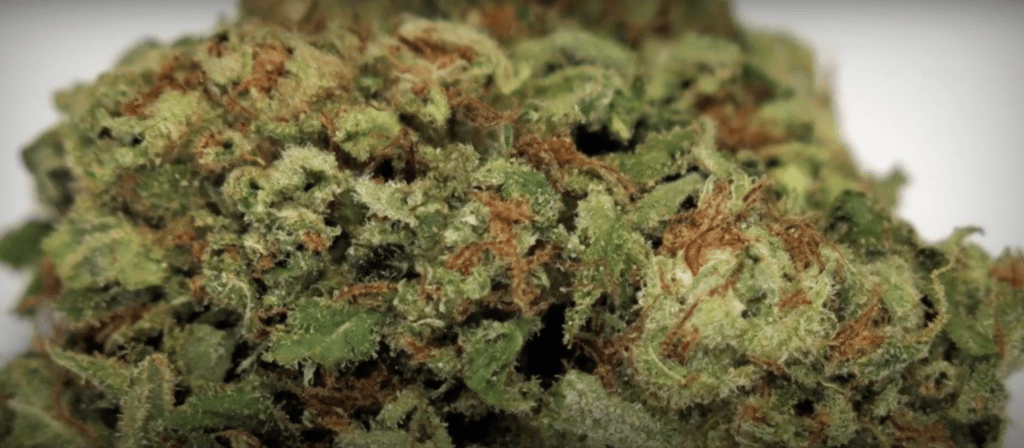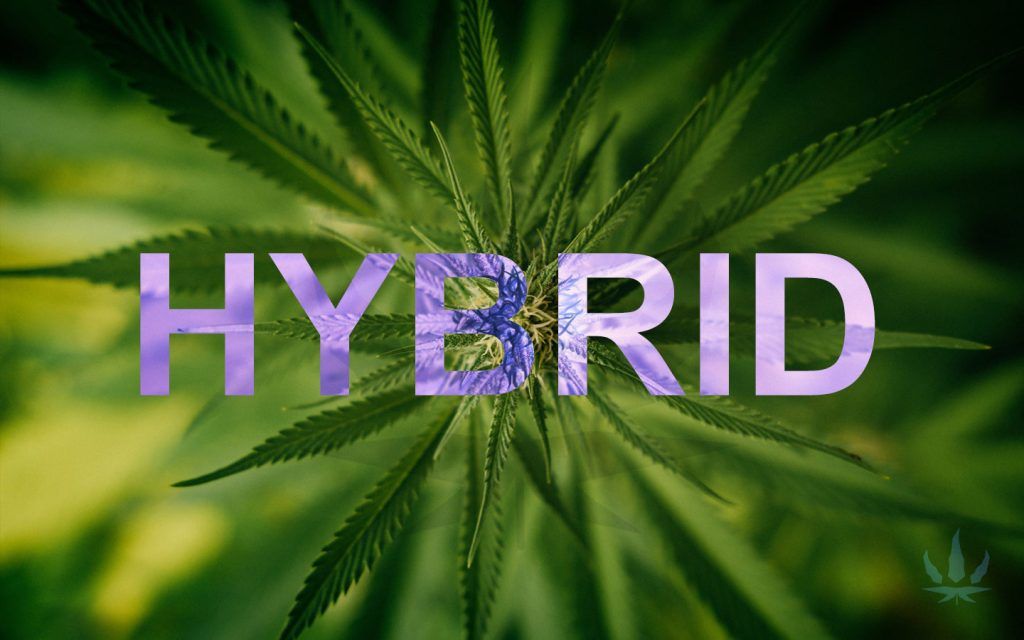Is Hybrid Weed Good for Your Health?

Hybrid weed is one of the fastest-growing industries in the country, as it has already been legalized for recreational use in 11 states and for medicinal use in 22 states. With marijuana becoming normalized, it is common for many people who were once hesitant about the substance to begin viewing it as a way to heal illnesses or just as a new hobby. It can be pretty intimidating to step into the world of weed, but doing so is actually quite simple. There are three different categories of cannabis: sativa, indica, and hybrid.
What Is a Hybrid?
You’ve heard of indica and sativa strains, but what happens when you combine the two? When strains are mixed to create blended crossbreeds, hybrid strains are born. Hybrid cannabis makes up a large portion of the flower and flower-derivatives on the market today, and understanding more about them can help you tailor your smoking experience for ultimate effects. Generally speaking, most existing strains are no longer pure sativas or indicas, instead being sativa-dominant or indica-dominant hybrids. Sometimes, there will be 50/50 mixes with both strain types of cannabis. These hybrids are the result of the inherent inquisitive nature of the cannabis community, which has experimented for years to create strains with unique combinations of desirable psychoactive effects.
How Are New Strains Created?
While browsing Leafly’s strain database, you may wonder what a cross of this and that strain is, what a hybrid or a backcross is, or what a parent strain is. All of these have to do with plant breeding—essentially, breeding a male and female plant to combine or refine the genetics of two plants or strains. Breeding two different strains often results in a new strain, or hybrid.
Cannabis breeders typically breed to purify and strengthen strains, combine strain traits, or enhance specific characteristics like higher yields, specific aromas, potency, and many other things. When growing and breeding, it’s important to know where your seeds come from and what kind of genetics they have. If the seed breeder can’t give you a detailed history of how a packet of seeds was bred or what they were crossed with, you never really know what you’re getting. Plant breeding is a fundamental process of growing cannabis. Breeding is highly technical and typically done on a commercial scale, but with legalization increasing, breeding is becoming more popular. You can even do it yourself.
annabis plants can be either male or female. Cannabis consumers are mainly concerned with female plants, because only females produce the sticky buds that we all know and love. But male cannabis plants are important for the breeding process, as they are needed to pollinate the bud-producing females.
Take the strain Super Lemon Haze as an example. It’s a hybrid (or a “cross”) of Super Silver Haze and Lemon Skunk—these are the parent strains. At some point, the breeder decided that they liked some attributes of Super Silver Haze and some of Lemon Skunk and decided to combine the two.
To do this, you need a male of one strain to pollinate a female of the other. Once pollinated, the female will then produce seeds that express the genes of both the male and female plant. Those seeds will be harvested and grown separately, and voilà: You have created a hybrid.
So how do you know whether to pick a male or a female of each strain that you’re crossing? “Often in cannabis, the traits of the female carry over to progeny (seeds) more than the male. That said, the traits of the male are often obvious to the discerning grower so one should definitely choose a male that will complement the traits of the female,” says Nat Pennington, founder and CEO of Humboldt Seed Company who’s been breeding cannabis for 20 years. “So much is possible with truly intentional breeding strategies.”
Types of Hybrid
Hybrids can be created using any combination of sativas and indicas. SxS indicates two sativa varieties have been bred together, while IxI means it’s a hybrid with two indica varieties together. SxI mixes are sativa-dominant with traits of both. Conversely, IxS hybrids are indica-dominant with traits of both. Combining two strains from the same family, like two different sativas, is done to combine effects not found in both despite both being sativas. For instance, some sativa strains will make you happy and giggly, while others may make you hyper-focused. Combining the two could give you all three effects in one single strain!
| Strain name | Plant species |
| Kush | Pure Cannabis indica or Cannabis indica hybrid |
| Afghan Kush, Hindu Kush, Green Kush, Purple Kush | Pure Cannabis indica |
| Blueberry Kush, Golden Jamaican Kush | Cannabis indica hybrid |
| Diesel Haze | Pure Cannabis sativa or Cannabis sativa hybrid |
Many producers crossbreed cannabis plants to develop new strains with specific characteristics. Experts suggest that there are over 700 strains of cannabis. One of the most important characteristics of a cannabis strain is the THC content. Some rules exist on naming each strain, but many producers do not name their products according to these rules. Despite these classifications, hybridization and crossbreeding has meant that people cannot tell exactly how much THC is in a particular plant by simply looking at its physical features. Experts suggest it is impossible to guess the composition of a cannabis plant by looking at its height, branching, or leaf appearance. The only way to know the chemical composition of a cannabis-derived product is to analyze it in a biochemical assay.

THC vs. CBD
So far, most research into the medical benefits of cannabis has focused on THC and CBD.
However, researchers and scientists remain unsure of the ideal quantities of THC and CBD that people should use for various medical conditions or recreation.
Although both THC and CBD are cannabinoids, they act differently in the body because they target different areas in the brain.
According to a 2020 article, people who use products with a higher THC content may experience psychoactive effects, such as euphoria and a greater sensitivity to things such as color and taste. However, THC also can lead to anxiety and paranoia.
CBD, on the other hand, is non-intoxicating. Some people report mild physiological effects, such as reduced anxiety when using CBD.
Animal studies suggest CBD may help improve vomiting, nausea, pain, and offer neuroprotective effects on the brain.
However, since CBD can affect mood, some experts describe it as a non-intoxicating but psychoactive compound.
The Food and Drug Administration (FDA) have approved some cannabis-related products including:
- two synthetic THC medications for the treatment of anorexia associated with AIDS
- another synthetic cannabis-related product for the treatment of nausea and vomiting associated with cancer treatment
- cannabis-derived CBD for children 2 years and older who suffer from rare seizure disorders
Studies are ongoing to determine whether CBD has other physiological effects. Preliminary human data suggests CBD could benefit conditions, such as schizophrenia and even opioid addiction.
Sativa vs. Indica
The terms indica and sativa derive from the biolgical classification of these species, which is based on physical characteristics. Cannabis indica plants are shorter and have broad, dark green leaves. Cannabis sativa plants grow taller and develop thinner, pale green leaves.
In the past, people used these terms to differentiate the cannabis plants in terms of their effects and THC or CBD content. An article in Cannabis and Cannabinoid Research seems to dispel these claims.
Previously, people believed that Cannabis indica plants contained higher levels of CBD. As a result, cultivators and dispensaries marketed indica-derived strains as a product that would lead to a more ‘relaxed high’.
Conversely, Cannabis sativa-derived strains that contained higher levels of THC would provide a more energetic high.
Many experts caution against this generalization, noting that even if this classification scheme were true, there is no way to be sure of the accuracy of any strain name.
There is no third-party agency that validates which strain names belong to indica, sativa, or hybrid.
To know exactly what is in a cannabis product, the manufacturers must analyze the product in a biochemical assay.
It is easy to see why this topic continues to cause debate. Cannabis is a complex plant, and, as of right now, there seems no obvious or simple way to categorize the various strains by ‘effect on the user.’
Each person who tries a strain of cannabis may have a different experience.
For example, some people describe the effects of Cannabis indica-derived products as sedating. However, other components of cannabis can also cause sedation, as well as other psychoactive effects. Compounds include:
- linalool
- myrcene
- limonene
- alpha-pinene
These components are often absent in a description of a cannabis-derived product, which is why some experts suggest that manufacturers should abandon naming their products as sativa or indica. Using these names is misleading and far more complex than people once thought.

